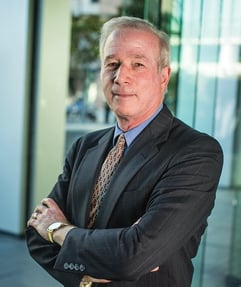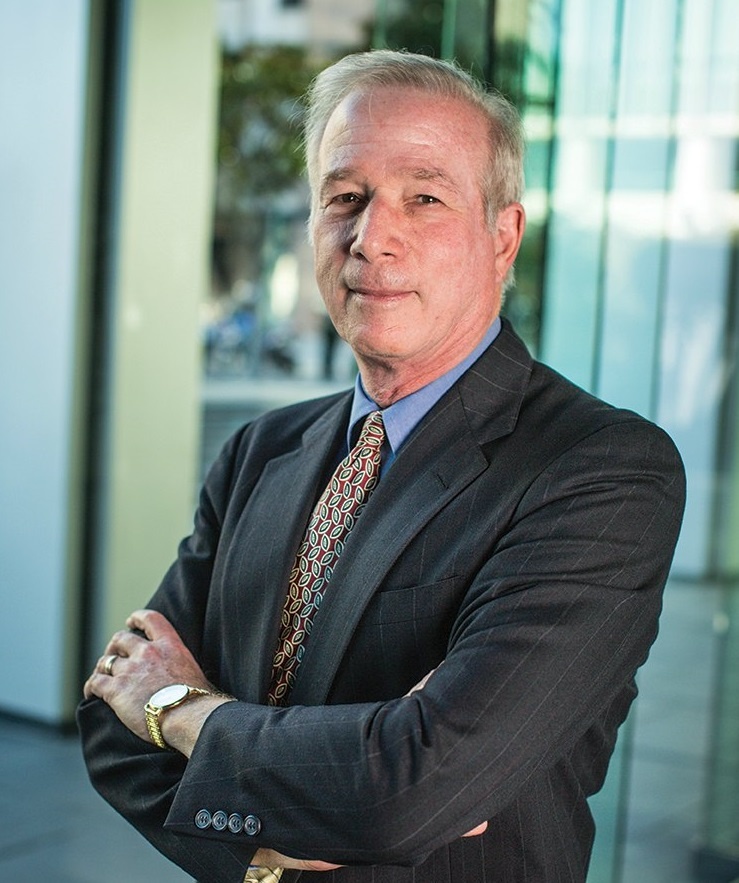
We are thrilled to share our first in a series of interviews on Leading in Today’s Health Ecosystem. This month, we had the great pleasure of interviewing Bob Sachs, PhD, Talent Strategy Advisor, Executive Coach, and Advisory Board Chair for TLD Group, about the importance of developing leaders who have the capacity to work collaboratively across healthcare sectors to drive population health and reduce healthcare costs. Bob, formerly the VP of National Learning and Development at Kaiser Permanente and a national leader in integrated healthcare, works with organizations to enhance and integrate critical leadership talent strategies and systems, on learning strategy and governance.
TLD Group: Given today’s changing healthcare climate, why is it important for the different healthcare sectors to work collaboratively?
Sachs: We all recognize that healthcare expenditures are a problem. They are taking up an increasing share of GDP, raising corporate budgets, and for individuals, healthcare costs are either competing with basic needs like housing and food or are becoming a barrier to being able to access care at all. Healthcare expenditures are at an all-time high, yet the health of our population trails many other developed countries, and we’re not getting enough value for our healthcare dollar. If we’re going to be able to manage healthcare expenditures, what we need to do is begin thinking about managing health, getting more efficient, and reducing waste. We need to be able to deal with health more effectively, and it’s impossible for healthcare organizations to be able to tackle that on their own. Providers and payers need to find ways to work collaboratively to create solutions that work for both of them. Life sciences companies need to look at the reimbursement schemes with payers and think about how there could be a better match between what drugs are being focused on and how they’re being reimbursed. All these sectors need to work more with public health, other public agencies, and local and state government. Population health is a complex issue that no single sector can handle by itself.
TLD Group: Can you share an example of leaders and/or organizations who have demonstrated the ability to work collaboratively across sector?
Sachs: The ability to work across sectors was very evident during my time working at Kaiser Permanente. While most people think about Kaiser as a single organization, it’s actually a payer and a hospital organization that share a common chairman & CEO and a common board, and is also comprised of multiple independent medical groups. All of these entities have agreed to work together for over 70 years because they whole-heartedly believe it’s the best method, not because they’re structurally required to do so. Following Kaiser’s example, the healthcare ecosystem can learn many lessons in order to create the conditions for collaboration to occur more broadly across sectors.
First and foremost, everyone at Kaiser shares the same mission. You can talk to any person – whether it’s a physician or nurse, senior leader or front-line employee – and they can all tell you the heart of Kaiser’s mission. That unifying mission is the anchor point that the organization uses to get through difficult times. There is also a strong belief in the integrated model as the best way to improve the health of communities. The belief in that model is the glue that keeps everyone together, even during the times in Kaiser’s history where it was in danger of spin-out. People always came back to the table because they believe in the mission and they believe in the model as the way of achieving that mission. Furthermore, while there are differences between these entities they, by and large, all focus on the same metrics as important – membership numbers, quality metrics, financial performance, etc. Despite any differences, the shared mission, beliefs, and metrics that underlie how they all operate within Kaiser are foundational to the effective collaboration for all of these years.
There are also numerous opportunities for leaders from these different stakeholder groups within Kaiser to interact. It’s built into the management processes and the developmental activities that leaders go through. There are formal and informal structures and interactions in which people get to see each other in action, and they develop personal relationships. As an example, during my time at Kaiser I led executive programs in which we brought together over fifty leaders from across the organization representing the different stakeholder groups. The socialization that occurred when those people came together, just by virtue of spending intensive time learning together, continued to pay dividends even after the course ended. This opportunity and ability to dialogue and build relationships has helped Kaiser succeed because people have developed closer relationships with people who may think and operate differently from themselves.
Finally, it takes work every day to continue to create the synergy across clinician, hospitals, and payers that ultimately results in the innovative solutions that Kaiser brings to the market. People are wired differently, have different points of view and interests, and so it takes work every single day to keep the operation flowing and to keep making progress.
TLD Group: What are the biggest obstacles, both for leaders and for organizations, in working collaboratively?
Sachs: The structural and cultural differences between organizations and the people that make up different organizations can be difficult to reconcile, especially because of a lack of interaction. Limited interaction causes a lack of understanding of others’ perspectives, cultures, and drivers, resulting in potentially false assumptions. This notion can be applied to the different sectors. Health plans have certain views about clinicians, clinicians have certain views about health plans, they both have certain views about pharmaceutical companies, and all of them have certain views of public health agencies and the capabilities of those agencies. These views are built from limited interaction with one another. It takes time to work through that barrier, understand what is important to each party, to see how they think about the issues and it also takes time before they start to see results. The time commitment to work through tough issues faced in collaboration often gets in the way. The fact is, this is consuming and challenging work, and often conflicts with the primary responsibilities of the people who need to come together to get the work done. Finally, there are big issues of control and uncertainty. Collaboration raises all kinds of issues that can be boiled down to who is in charge or gets to make what decisions. This becomes especially difficult when you are exploring new ground and creating new solutions. It’s difficult for results-oriented leaders to commit to a path when the outcomes are uncertain.
TLD Group: How can leaders and their organizations overcome these challenges?
Sachs: What we need to do is develop leaders who have the capacity to think and behave differently. When it’s boiled down, organizations are made up of people, and their cultures are created by the ways in which people behave because of the signals they receive from senior leaders. To change the organization’s culture, it’s important to have leaders who recognize the importance of operating differently, and who are willing to put in the time and effort and persist through the challenges. These leaders realize the importance of collaboration – whether it’s with other leaders within their organization or with potential partner organizations – but also recognize that it will be difficult. They recognize that biases can be created from being a leader in their own world (be it their particular organization or their healthcare sector) but they also know that the way to move forward is to find opportunities to align around common interests, and not to emphasize or be derailed by their differences. They walk into the room with the goal of finding common ground and then seek to create an environment in which people can explore different solutions without passing judgment. They take the time to truly understand how and why the other party approaches the situation. They look for ways that their differing approaches can come together to serve important common interests, such as improving health, or more specific approaches that enhance the food alternatives in a community or by helping people to avoid constant trips to the ER through better self-care and home care. It takes leaders who are willing to step outside of the context that they typically operate in, expand the solution space, invite others into the conversation and give them an opportunity to participate in developing solutions.
Leaders who exhibit these behaviors can change the culture of the organization by demonstrating and communicating that collaboration is worth the effort. This can help a collaborative mindset become embedded within the organization. Leaders set the culture through the decisions they make and the actions they take, so these leaders’ decisions and actions need to reflect this broader mindset of working across entities in order to improve the health of our populations and provide more value for the healthcare dollar. The more leaders we have that think and operate in this way, the more natural it will become across the entire organization, and the more progress will occur as a result.
TLD Group: What outcomes could cross-sector partnerships expect to see from working in collaboration, both within their own organizations and on the grander scale of population health?
Sachs: First and foremost, collaborative solutions must be targeted, because talking about population health in general is too broad. The most successful approaches focus on a particular disease, health behavior, or other specific goal that needs to be achieved. Through cross-sector collaboration, we can expect to see people exhibiting behaviors that make better use of healthcare resources. The bottom line is about healthier communities and better value for the healthcare dollar at the individual level, the corporate level, and the national level.



